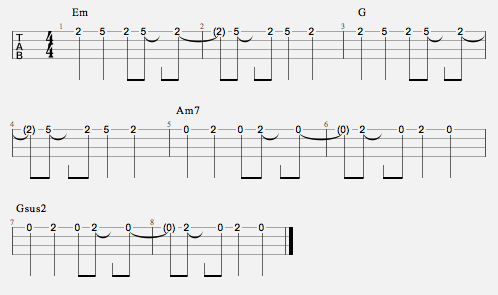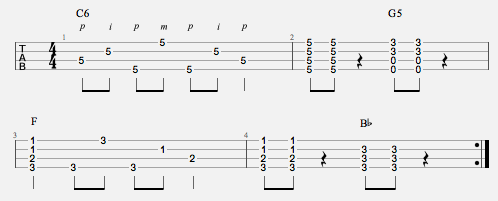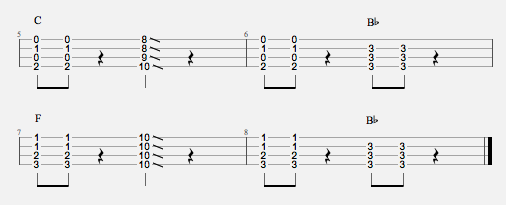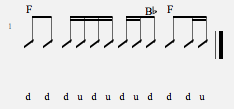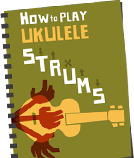Pegasus Bridge – Yoko (Ukulele Version) (Chords)
This video made both me and L.bo Marie cry. She because the music is so affecting. Me because comparing their fresh-faces to my craggy, careworn flesh reminded me that my death is but a blink away.
Two things to bear in mind before you set out on this one. Firstly, he’s tuned down half a step to f# B Eb Ab. Secondly, I’ve simplified some of the chord names in the sheet. Technically the Em11 is Emadd11 and the F#m is F#maddb9.
Suggested Strumming
In the verses you can just do all down strums. That’s sixteen down strums for each chord (best to think of them as two groups of 8). If you want to follow what he does, he adds in a quick up-strum between the last two down-strums of each set of sixteen. So for each chord you’re doing this:
d – d – d – d – d – d – d – d –
d – d – d – d – d – d – d u d –
If you’re not doing the twiddly bit in the chorus you can continue with the down strums. Just be aware that it’s 8 then 6 down strums (not 8 then 8). So you’re doing this:
d – d – d – d – d – d – d – d –
d – d – d – d – d – d –
Twiddly Bits
The guitar part that’s played in the verse fits on the uke like this:
The fancy bit in the chorus (shown at the bottom of the chord sheet) pretty much combines that with the chords.
Requested by ukematt.
